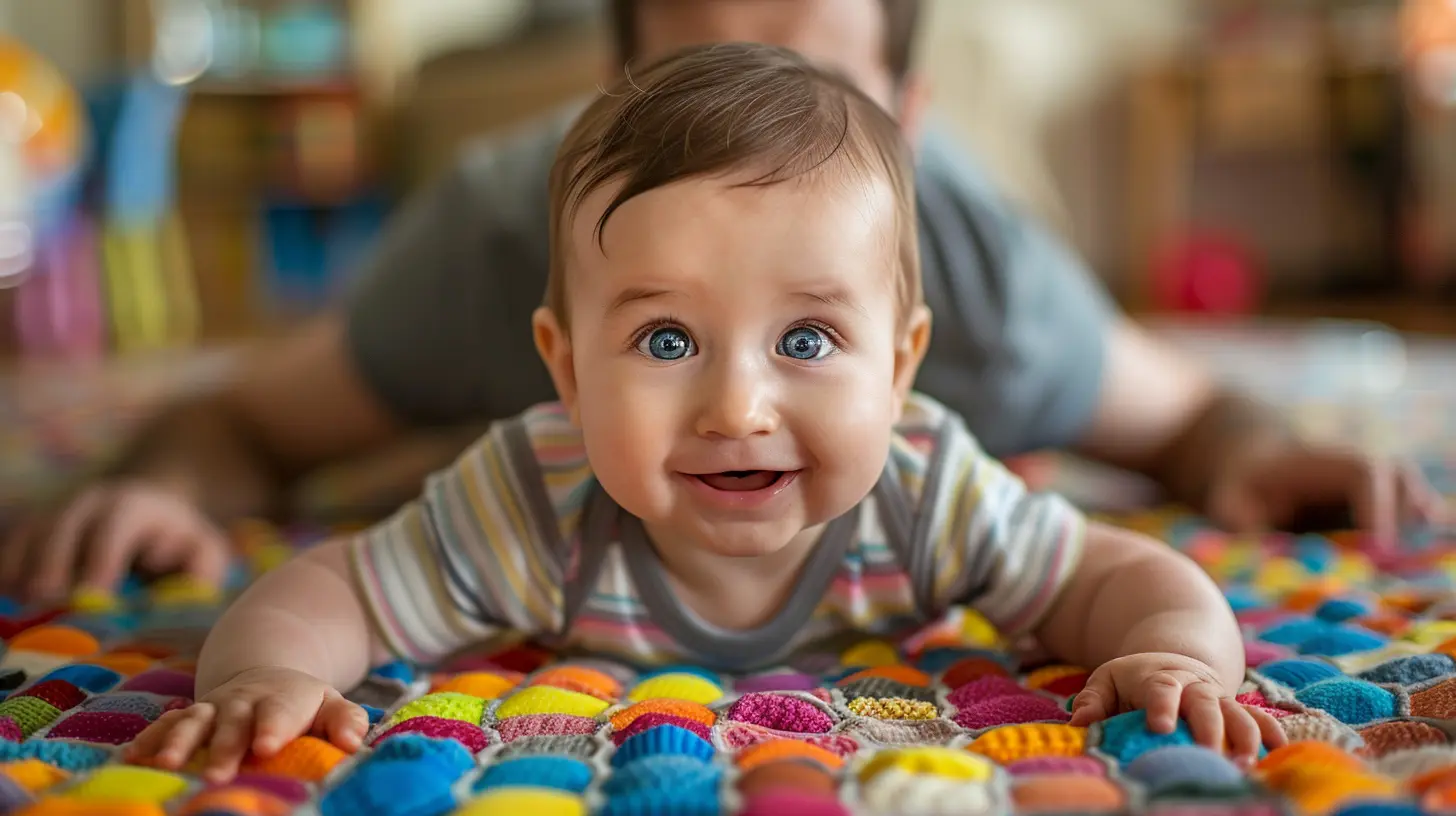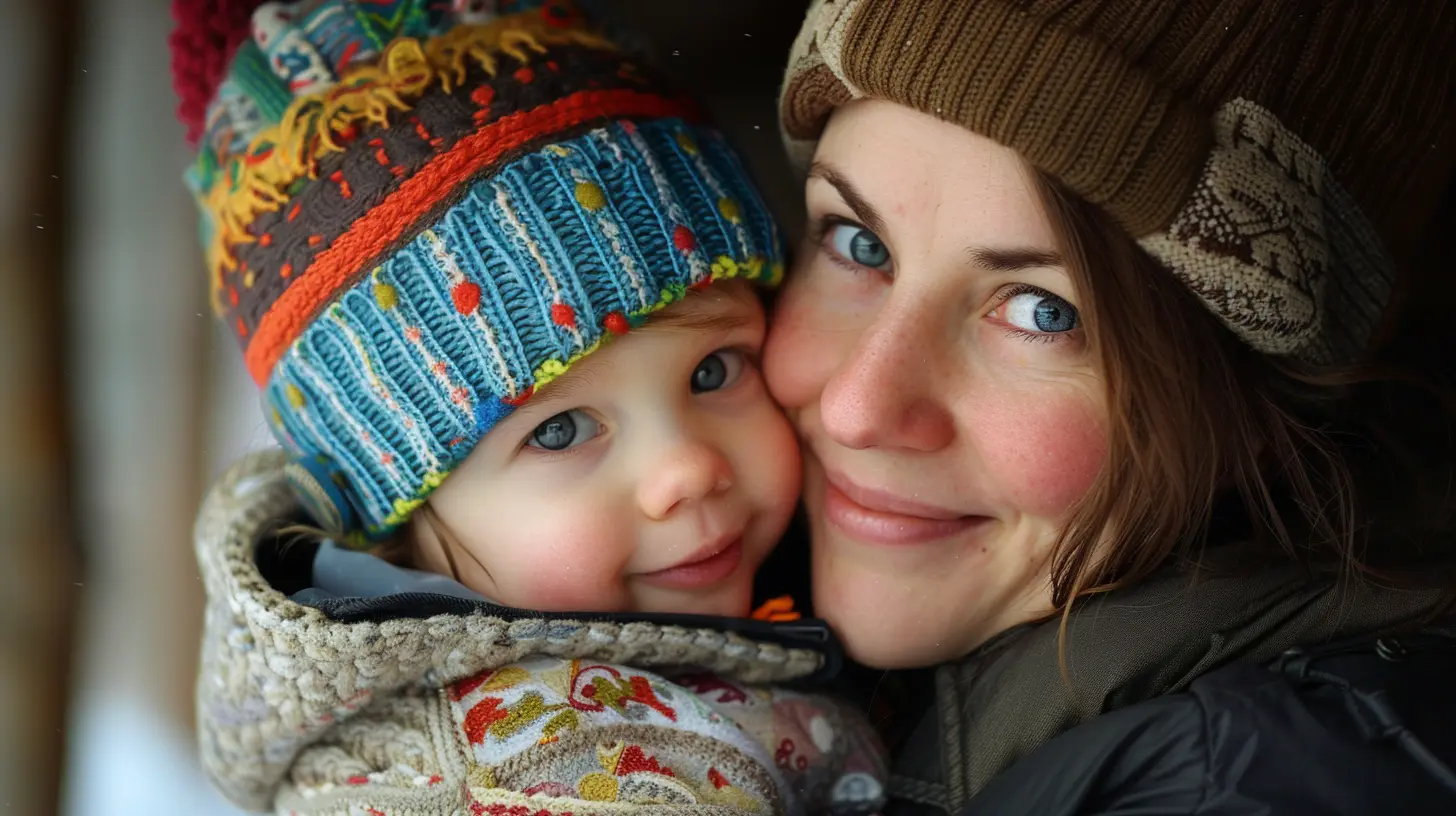Helping Your Toddler Develop a Healthy Attachment Style
29 April 2025
As parents, we all want our little ones to feel safe, loved, and confident in the world around them. But did you know that the way you interact with your toddler plays a huge role in shaping their emotional well-being? This is where attachment styles come into play.
A healthy attachment style can set the foundation for your child's future relationships, self-esteem, and even how they handle stress. So, how can you help your toddler develop a strong and secure bond with you? Let’s dive into practical, everyday ways to nurture that connection.

What Is Attachment and Why Does It Matter?
Attachment refers to the emotional bond between a child and their caregiver. Think of it like a sturdy bridge—when built strong, it provides security and connection, helping your child navigate the ups and downs of life.Psychologists have identified four main attachment styles:
1. Secure Attachment – The "gold standard" where kids feel safe, loved, and confident exploring the world.
2. Anxious Attachment – When kids crave closeness but fear being abandoned.
3. Avoidant Attachment – When kids become emotionally distant due to unmet needs.
4. Disorganized Attachment – A mix of anxious and avoidant behaviors, often linked to inconsistent caregiving.
Why does this matter? Well, children with a secure attachment tend to grow up feeling confident in relationships, handling stress better, and being more emotionally resilient. It all starts with how we, as parents, respond to their needs.

How to Foster a Secure Attachment in Your Toddler
Building a healthy attachment doesn’t mean being a perfect parent (because, let’s be honest, that doesn’t exist!). It’s about being present, responsive, and emotionally available. Here’s how you can create that strong connection:1. Respond to Their Needs Consistently
Imagine you’re learning to trust a new friend. If they showed up when you needed them every time, you’d probably feel pretty secure, right? The same goes for toddlers.When your little one cries or reaches out for comfort, responding with love and attentiveness teaches them that they can rely on you. This strengthens their sense of security and helps them build trust in relationships.
2. Prioritize Quality Time
In today’s busy world, it’s easy to get caught up in distractions. But even just 15 minutes of focused, one-on-one time can make a big difference.Put away your phone, get on their level, and engage in their world. Whether it's building blocks, reading a book, or just sharing giggles, these moments reinforce your bond.
3. Use Gentle and Positive Discipline
Discipline isn’t about punishment—it’s about teaching. Instead of yelling or using time-outs that isolate your child, try gentle discipline by:- Setting clear, consistent boundaries.
- Offering choices to give them a sense of control.
- Acknowledging their feelings and guiding them toward better behavior.
When toddlers feel understood and supported, they develop emotional security rather than fear.
4. Encourage Independence While Staying Supportive
Have you ever noticed how toddlers want to do everything by themselves (even putting on shoes backward)? Encouraging their independence while staying emotionally available helps them develop confidence and security.For example:
- Let them try new things but be there for reassurance.
- Use encouraging words like, “I see you’re working hard on that puzzle!”
- Allow them to explore, knowing they can return to you for comfort.
5. Be Emotionally Available
Toddlers have big emotions in their tiny bodies. Instead of shutting down their feelings, acknowledge them:- “I can see you’re really upset that your tower fell. That’s frustrating!”
- “You seem sad that we have to leave the park. Transitions are hard.”
By validating their emotions, you help them feel understood, which builds trust and emotional intelligence.
6. Create Routines and Predictability
Imagine how unsettling it would be if your daily routine changed unpredictably. Now, think about how that feels for a toddler.Consistent routines—like bedtime, mealtimes, and playtime—help toddlers feel safe and secure. They know what to expect, which reduces anxiety and builds trust.
If changes happen (because life isn’t always predictable!), prepare them in advance:
- “Tomorrow, we’re going to grandma’s house instead of the park.”
- “After lunch, we’ll take a nap, then go outside.”
7. Be Affectionate (But Respect Their Boundaries)
Physical touch is one of the strongest ways to reinforce attachment. Hugs, cuddles, and holding hands all help your child feel loved and secure.At the same time, respect their personal space. Some toddlers don’t always want hugs, and that’s okay! Teaching them that their boundaries matter also helps them feel safe.
8. Repair After Disagreements
No parent is perfect—we all get frustrated, lose patience, and say things we regret. The key? Repairing those moments.If you snapped at your toddler, simply apologize:
- “I’m sorry I raised my voice. I was feeling overwhelmed, but that wasn’t okay.”
This teaches them that mistakes are part of relationships, but love and connection remain strong.

Common Challenges (And How to Handle Them)
1. My Toddler is Extra Clingy—Is That Bad?
Nope! Clinginess is often a sign that your child sees you as their safe haven. Instead of pushing them away, reassure them while encouraging small steps toward independence.2. What If I Didn't Have a Secure Attachment Growing Up?
Here’s the good news: You can break the cycle! Simply being aware and making an effort to be present and responsive can help create a secure attachment for your child.3. Can Daycare or Babysitters Affect Attachment?
As long as your toddler has a strong, consistent bond with you, they can still form secure attachments, even with other caregivers. The key is making sure they feel loved and supported whenever they’re with you.
Final Thoughts
Helping your toddler develop a healthy attachment style isn’t about being perfect—it’s about being present. By responding to their needs, offering love and consistency, and fostering a strong emotional connection, you’re laying the foundation for a secure, confident, and emotionally resilient child.So, next time your toddler reaches for you, needs reassurance, or just wants to cuddle—embrace it. You’re shaping their emotional world in the most beautiful way.
all images in this post were generated using AI tools
Category:
Toddler MilestonesAuthor:

Max Shaffer
Discussion
rate this article
5 comments
Meagan Barrett
Developing a healthy attachment style? Remember, toddlers are like tiny emotional ninjas. One minute they're clinging to your leg, and the next they’re off plotting world domination with a teddy bear. Good luck, brave parent!
May 16, 2025 at 4:22 AM

Max Shaffer
Thanks for the reminder! Parenting truly is a wild adventure, and every little moment shapes their emotional world.
Thalor Graham
Consistency fosters secure emotional bonds.
May 4, 2025 at 3:08 AM

Max Shaffer
Absolutely! Consistent responses to your toddler's needs build trust and strengthen emotional connections, laying the foundation for a healthy attachment style.
Elena Meyers
Nurture connections for security.
April 30, 2025 at 3:37 PM

Max Shaffer
Absolutely! Nurturing connections fosters a sense of safety and trust, essential for healthy attachment in toddlers.
Jack Burton
Helping your toddler develop a healthy attachment style is easy—just remember, a hug works wonders, but snacks are the ultimate emotional support!
April 30, 2025 at 3:11 AM

Max Shaffer
While hugs are crucial for emotional bonding, consistent nurturing and communication also play key roles in fostering a secure attachment. Snacks can support, but love and presence are what truly matter!
Jane McGee
Sure, here’s a sassy and bold comment for you: Healthy attachment? More like dodging toddler meltdowns! Remember, it’s not just about the hugs; it’s about surviving snack time chaos. Cheers to all the brave parents out there!
April 29, 2025 at 3:04 AM

Max Shaffer
Thanks for the fun perspective! Parenting definitely requires a mix of love and strategy. Cheers to navigating those toddler challenges!
MORE POSTS

Dealing with Back-to-School Jitters: Tips for Parents and Kids

Encouraging Teamwork and Collaboration in Learning

The Role of Eye Contact and Presence in Attachment Parenting Theory

Parenting a Picky Eater: Creative Meal Solutions to Make Everyone Happy

How to Encourage Creativity as Part of School Prep